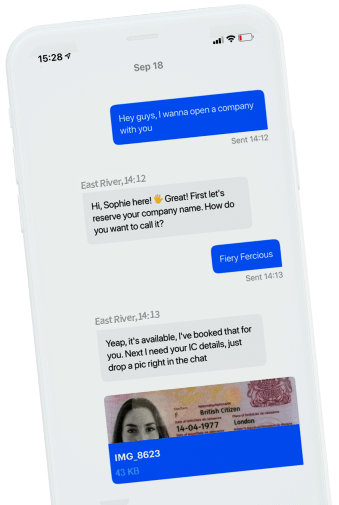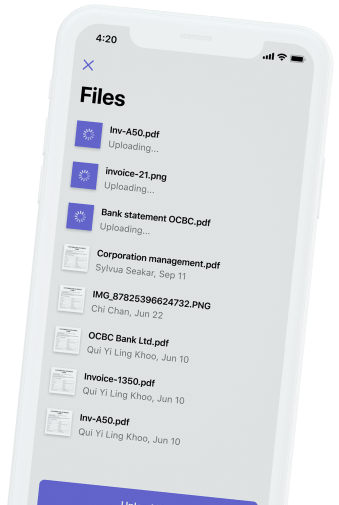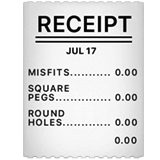How to Start E-commerce Business in Singapore 
A complete guide to set up your e-commerce business in Singapore, including the checklist, estimated costs, and starting requirements



- 1
Decide what to sell
- 2
Choose a business model
- 3
Incorporate the Business
- 4
Choose your platforms
- 5
Design your store
- 6
Open a Business Account
- 7
Connect Payment Systems
- 8
Set up customer communication
- 9
Set up reporting


Step 1
Decide what to sell
First things first, you need to know what you’ll be selling. The product you choose might affect your business structure: inventory setup, payment model, preferred marketplaces, and marketing tools. It’s ok if your idea of what to sell is vague. Here are a few tools to help your decide:
1
Trending categoriesCurrently, the top e-commerce product categories are: Consumer electronics, Fashion and beauty, Toys, DIY, Hobbies, and Personal care products.
2
Retail priceIdeal range is S$25-S$70. The minimum of S$25 will ensure you have your costs covered - like Amazon FBA shipment fees and advertising costs. Expensive product are harder to sell and generate volume.
3
Sales volumeThere are Chorme extensions that help you evaluate the potential sales volume for you product. Estimated monthly sales of above 200 units is great!
4
NicheA good way to assess the market capacity for you product is to check how many reviews the competing Amazon stores have. The fewer testimonials the better, it means there’s room for another vendor there.
5
SimplicityIs it easy to source or produce? Is the packaging simple and the shipping weight light (and thus not too expensive)? It’s best to use shortcuts to test your shop, so don’t go for complicated solutions.


Step 2
Choose a business model
There are different ways to go about running an e-commerce. let’s go from easiest to the most complex:


Step 3
Incorporate the Business
In Singapore registering a business is simple enough. You need to fulfill the government requirements, pay the fees, collect paperwork. The procedure can be done online within a day, even if you’re a foreign citizen staying abroad. To run an e-commerce it’s best to register a private limited company, or LLC.

Here’s what you’ll need to do:
- You need at least 1 Director who is local: a Singaporean or a PR. If that’s you, perfect, if not, you can hire a Nominee director as a service.
- You need a Company Secretary: a certified officer who reports to the government on your company behalf. It is possible but ill advised to become one yourself. It’s best to hire an agency.
- You need a Registered Singapore address. That’s where all your official email will go. Again, get a service if you don’t plan to rent a space or register your Singapore apartment as one.
- Are you a foreigner? Then you can’t apply for registration yourself and must get a local agency certified to do incorporation for foreigners.
- Company name. Make sure the name you’ve chosen is available in the company name check. Note that using words like “bank” or “education” can make the registration process longer.
- IDs and contact details for yourself, all your other directors and shareholders, and your Corporate Secretary.
- Are you a foreigner? Present proof of address for yourself and all your other directors and shareholders. Utility bills or bank statements will do.
- Company Constitution. It needs to specify your shares structure and paid-up capital (S$1 is enough).
- Registered local address.
You’ll need to submit to ACRA, Accounting and Corporate Regulatory Authority, the following
- Paperwork
- Government fee of S$315 (S$15 for name reservation and S$300 for registration)
- Application
ACRA usually processes applications within hours so it really just depends on how much time you need to collect all the data and documents.
If you don’t want to spend your time preparing all the details, hire a Singapore incorporation agency. East river can process everything for you: just send us your passports in an online chat and we take it from there. Easy!
Incorporation for foreigners is S$2,550 It includes Nominee director, Corporate Secretary, Registered Address, all paperwork and government fees.
Incorporation for locals is S$350 including all paperwork and S$315 government fee. If you buy Unlimited Corporate Secretary service at S$600, incorporation is free.
At East river we help companies incorporate and run their business
For foreigners we include all necessary services in the package: Nominee director, Corporate Secretary and Registered address. For locals we incorporate via MyInfo, so you don't have to type anything in.



Step 4
Choose your platforms
This one is big because it does define your sales model, too. Here are a few approaches and brands you should look at:
A great way to optimise on costs and efforts is to go to one of the huge existing online shops. You can benefit from their massive user bases and well-oiled selling scripts. The disadvantage is that you’ll be in a very competitive environment. Some of the most popular marketplaces in Singapore include:
 Amazon
AmazonFamous for great storage options and international shipment possibilities. The only big platform that lets you trade as an individual person, not an LLC.
 Lazada
LazadaA locally developed marketplace, it is still to this day the most beloved and visited in Singapore.
 Shopee
ShopeeAnother Singaporean e-commerce that grew to take over the Asian market. It’s also quite easy to set up.
 Qoo10
Qoo10While popular, this one is quite expensive, asking for 7%-10% from every transaction.
It gives you all the spotlight and unlimited possibilities for creating a unique brand design and feel. It also means you’ll need a strong marketing and SEO optimisation strategy to ensure that your future customers can find you.
There are great solutions to build your shop with. We suggest to try one of these:
 Shopify
ShopifyIt’s a very popular choice because it’s so intuitive and easy to set up. It comes at a cost though, literally. Depending on how many extras you need, expect to pay $9-$299 a month.
 Magento
MagentoA free platform, and what could be more enticing. Magneto is open source, so you either need to know your coding or someone who does. That goes for managing the future store, too.
 Prestashop
PrestashopIt’s also a free open source solution, though more user-friendly than Magento. It doesn’t require quite as much technical knowledge. On the downside your product library is limited to 100,000 items.
You don’t have to limit yourself to a single thing. In fact, it’s best to improve your chances by being everywhere: owning a shop and promoting via different marketplaces. It might get hectic trying to juggle all of that. There are great tools to manage several channels at once, such as SelluSeller, Synagie, or Sitegiant.


Step 5
Design your store
Your store design depends heavily on the platform you’ve chosen. You’ll find that setting up your own store offers more possibilities in terms of branding. But even if you just add your products to a huge marketplace, there are still ways to make it more memorable and ensure that the feel of your store fits with your vision.
Brand personality
Honestly, it seems soo pretentious to come up with a brand persona for your online shop. But hang with us, it doesn’t have to take much time or any money. All that’s needed is to decide: are you a friendly brand? A posh one? A badass shop? Once you know inside yourself, the other pieces will fall into place.
- Sincerity
- Excitement
- Competence
- Sophistication
- Ruggedness
Something to fit with the persona and helps you achieve the same emotion you want the users to feel. Like Fit-grit for your sports gear or CuteFruit for a baby food brand. Make sure you convey the emotion to your designer. No designer? Commission someone on Fiverr or Upwork.



Product photos
You’re going to need A LOT of those. If you source ready made products, you might get those from your producer. If not, set up a photo shoot: invite a photographer, get a clean background, and make sure you have all the products available. You’ll need several photos for each item: show all views like top and bottom, and user cases if applicable. Clothes should be worn and modeled, canned goods should have a clear picture of all labels, and cosmetics need a good representation of the actual colors.



Step 6
Open a Business Account
Whatever your situation is, do not use a personal account for your business finances. First of all it can affect your legal liability. It is also way easier to manage and track your finances, do taxes, and respond to audits should one occur later on. Generally, it’s just the right thing to do.
Open a neobank account
This is a great option because you can get an account within 24 hours and completely online. It works great for foreigners especially because neobanks are usually faster with their KYC procedures.
We partner with Aspire, the Southeast Asia’s 1st business neobank that serves SMEs. Opening an account is free, and they offer credit lines to their customers. We do a joint KYC procedure so you can have your account on the same day you’ve registered your business.
I want that!

There are a few major banks operating in Singapore. We partner with 4 of them and can present you to them as our clients. Note that this does not guarantee that you will have your account opened with them.
 OCBC
OCBCThe oldest bank in Singapore is also very digital-friendly. They were the first ones together with East river to introduce same-day account opening and incorporation to their clients.
 DBS
DBSThese guys require no minimum balance but charge quite harshly for the account fee at S$216 a month.
 UOB
UOBThey offer a e-business account with no monthly or yearly fee. However, you need to keep S$5,000 as your average daily balance.


Step 7
Connect Payment Systems
Getting ready to actually receiving revenue now! It’s time you introduced ways your customers can pay you. There are several popular payment gateways used in Singapore:
 Paypal
PaypalProbably the best-known global payment gateway, PayPal integrates well with most e-commerce platforms. Its two preferred options for your business are PayPal Express and PayPal Standard. Express is a faster and easier method for your customers, as they can process their purchase right on the website, without having to go on a separate page. Paypal charges a flexible that starts at 3.9% on your total sales +$0.50 fixed transaction fee. As your sales volume goes up, the % goes down.
 Stripe
StripeA well-known tool around the globe, Stripe has been relatively late to the Singapore market, only offering its services here from 2016. Its rates are at 3.4% on total sales amount + $0.50 fixed transaction fee, making it cheaper than PayPal. However, their fee is flat unlike that of PayPal, so as you grow, it stays the same. When paying, the customers remain on your page. It also offers to remember card details, making it easier to return to shopping with you. Installing Stripe is a bit of a tech task. Not for Shopify or Woocommerce users though as they have it integrated already.
 SmoovPay
SmoovPayThis is a local Singaporean solution that can offer some very competitive pricing. It charges 2.9% on total sales amount + $0.25 fixed transaction fee. It’s fairly simple to integrate, taking maybe 15 minutes to setup. However, to check out. your customers will be taken to a separate page. Though it has a 3-D authentication and is secure, some customers abandon their shopping if being redirected.


Step 8
Set up customer communication
In e-commerce, feedback is king. Nobody believes products that have no reviews. After one bad experience people won’t come back to shopping with you. So you really need to make sure that the communication flow is set up and working seamlessly. Here are a few simple rules to follow:


Step 9
Decide what to sell
First things first, you need to know what you’ll be selling. The product you choose might affect your business structure: inventory setup, payment model, preferred marketplaces, and marketing tools. It’s ok if your idea of what to sell is vague. Here are a few tools to help your decide:
These are the necessary reports and proceedings your company has to submit:
1
ECI — Estimated Chargeable IncomeHas to be filed no later than 3 months after the FYE
ECI is your company’s taxable income after you’ve deducted all tax-allowable expenses. You also need to state company revenue in your ECI form.
Filed by your Accountant
2
AGM — Annual General MeetingHas to be held no later than 6 months after the FYE
AGM is an obligatory meeting where you present the financial statement of your company to the shareholders and get them signed. It is not necessary to actually meet — you can organise it as an exchange of documents. During the AGM, you can also agree on the tabled audited or unaudited financial statements, dividends distribution, appoint officers and directors and approve their salaries.
Prepared by your Corporate Secretary
3
AR — Annual ReturnsHas to be filed no later than 7 months after the FYE
Annual Returns is a set of documents you need to submit each year: your company name and type, registered address, officers, registered charges and any changes, shares structure and capital, and the financial statements in XBRL format, full version or highlights.E
Filed by your Corporate Secretary
4
Form C /C-SHas to be filed no later than November 30th after the FYE. If you submit reports online, you have until December 15th after the FYE.
Forms C-S/C are the filing standards for reporting your taxes. You can file a simplified form C-S, if your company’s revenue is less than S$5m and you don’t claim capital allowances or losses, group relief, investment allowance, foreign tax credit, or tax deducted at source in the current Assessment Year. Otherwise, it’s form C.
Filed by your Accountant

At East river we free entrepreneurs from the paperwork routine
Our certified accountants organise books and convert them into management reports and tax returns. This way we make sure your company stays compliant while you can focus on your business.
Q&A
How do I incorporate my ecommerce business?
To incorporate your e-commerce business, you must file with Accounting and Corporate Regulatory Authority (ACRA). We will be happy to assist you with the application. But if you prefer, you can log in to Bizfile+ using your SingPass credentials and submit the application online.
Here are the steps:
- Decide on the company name;
- Decide which company structure to open (Sole proprietorship, private/public limited liability company, or subsidiary/branch/representative office).
Here are the requirements for setting up a private limited company in Singapore.
- At least one shareholder
- At least one ordinarily resident director
- At least one company secretary
- Minimum of $1 as initial paid-up share capital
- A registered office address (P.O. Box address is not valid)
- A Company Constitution
What business structure is best for an online business?
Before you set up your company, you should choose a business structure that meets your business’s needs. The most common business structure is a private limited company, largely due to its limited liability and tax advantages. Being a separate legal entity, a private limited company protects you from this. We strongly recommend that e-commerce businesses have a private limited company structure.
Do I need a license to sell online in Singapore?
E-commerce companies selling products in Singapore do not need a license. However, according to the Singapore Broadcasting Authority, all broadcasting services, including computer online services provided by Internet Service Providers (ISPs) and Internet Content Providers (ICPs) must be licensed.
What laws in Singapore relate to Online Businesses?
Depending on the type of products a Singapore e-commerce business plans to sell, there are various regulations you would need to comply with:
- Online gambling operators are governed by the Betting Act and the Common Gaming Houses Act.
- Online financial service providers are subject to the Singapore Companies Law and financial services provision.
- Online companies that sell second hand goods are subject to the Second Hand Dealers Act. They must obtain a license from the Deputy Commissioner of Police.
- Promotional activities on the internet are subject to the Common Gaming Housing Act and the Public Entertainment Act in Singapore,
- Online advertising is governed by the Singapore Code of Advertising Practice, the Computer Misuse Act and the Consumer Protection Act.
You would also need to take note of the following legal considerations:
Avoid trademark infringement: When you register your website using a domain names, be careful not to use a name that sounds similar to an existing brand as it will confuse the general public. The E-commerce should register their trademark to deter and prohibit others from using similar or identical domain names. If anyone uses your trademark, you have a right to apply to court for relief to be granted.
Include ‘Terms of Use’: You should also consider including a set of Terms of Use of the website which is a legal contract between the website owner and the users. The specifics covered in the terms would vary for your business.
Our Singapore e-commerce company registration experts can explain more on the regulations associated with e-commerce in Singapore.
How to set up an e-commerce business?
You may be wondering, “How to Set Up an E-Commerce Business in Singapore?”. There are a few steps to set up an e-commerce business. Do some research into what you want to sell. Find out what the popular niches in your market are, then choose the suppliers to get your products from wisely. You can then incorporate your company and set up a business bank account to limit your liability and keep your finances in order. You can set up the online shop itself by registering the domain name, selecting a hosting service, and designing your website. Have stock on hand before selling. You can also make use of storage facilities. Work with a delivery partner to make sure you are able to deliver products to your customers on time too. As you grow, you might want to make sure your IT systems are in check. Create a buzz online over different marketing channels and explore different payment systems.
Why start an e-commerce business?
You can make money when you start an e-commerce business. Just look at the total revenue in the eCommerce market in Singapore. It amounted to US$4,906 million in 2019. These are in the product niches of fashion, electronics and media, toys, hobby and DIY, furniture & appliances. Studies show that 26% of Singaporeans shop online at least once a week, that’s the highest percentage per capita in Southeast Asia.
Where to start an e-commerce business?
You can start your e-commerce business in Singapore to sell your products locally, or regionally. When you start selling internationally, things will get more complicated. You’ll have to calculate international shipping rates. You will also have to start handling taxes and all other tax-related issues. As the e-commerce business owner, make sure that the sale was handled according to the letter of the law. If you want to sell to Europe, you will absolutely have to read about GDPR to avoid fines as well.



































